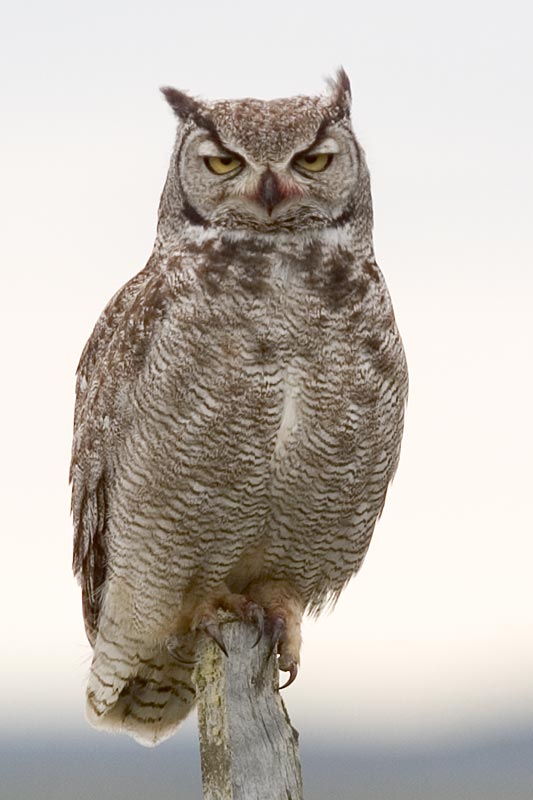|
| 질의: Birds of america | 결과: 330번째/1888 | |
Magellanic Horned Owl (Bubo magellanicus) - Wiki
| 제목: | Magellanic Horned Owl (Bubo magellanicus) - Wiki
| |

| 해상도: 533x800
파일크기: 56072 Bytes
등록시간: 2007:11:16 20:27:54
|
Magellanic Horned Owl
From Wikipedia, the free encyclopedia
Order: Strigiformes
Family: Strigidae
[Photo] Magellanic Horned Owl (Bubo magellanicus), Tierra del Fuego, Chile, December 2005. Chilean name: Tuc??quere. Source: http://www.arthurgrosset.com/sabirds/magellanichornedowl.html -- Photo Copyright (C) Arthur Grosset (www.arthurgrosset.com)
The Magellanic Horned Owl or Lesser Horned Owl (Bubo magellanicus) is a large owl of the genus Bubo found in southern South America. It was formerly classified as a subspecies of the Great Horned Owl (Bubo virginianus) but is now frequently treated as a separate species based on differences in voice and size and because of the genetic distance between the two.
It is about 45 centimetres long with birds in the north of the range being largest. It has broad wings and a large head with two "ear" tufts. The plumage is mainly grey-brown but is quite variable in colour. The underparts are pale with narrow grey-brown bars and the breast has dark blotches. There is a black border to the facial disc and white stripes above the yellow eyes. The Great Horned Owl is similar but larger with stronger feet and bill, broader bars on the underparts and longer ear-tufts.
The deep hooting call consists of a double-note followed by a loud, vibrating note. The bird's local name tuc??quere is imitative of the call.
The range extends from central Peru and western Bolivia southwards through Chile and western Argentina as far as Tierra del Fuego. The bird occurs in a variety of habitats including open forest, scrubland, farmland and grassland. It hunts over open country, mainly at night. Rodents make up most of the diet but birds and insects are also taken.
http://en.wikipedia.org/wiki/Magellanic_Horned_Owl
| The text in this page is based on the copyrighted Wikipedia article shown in above URL. It is used under the GNU Free Documentation License. You may redistribute it, verbatim or modified, providing that you comply with the terms of the GFDL. |
|
^o^
동물그림창고 똑똑전화 누리집
^o^
|
|